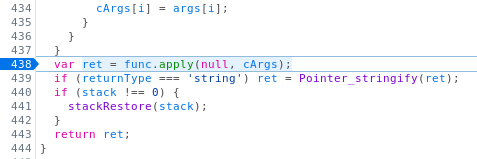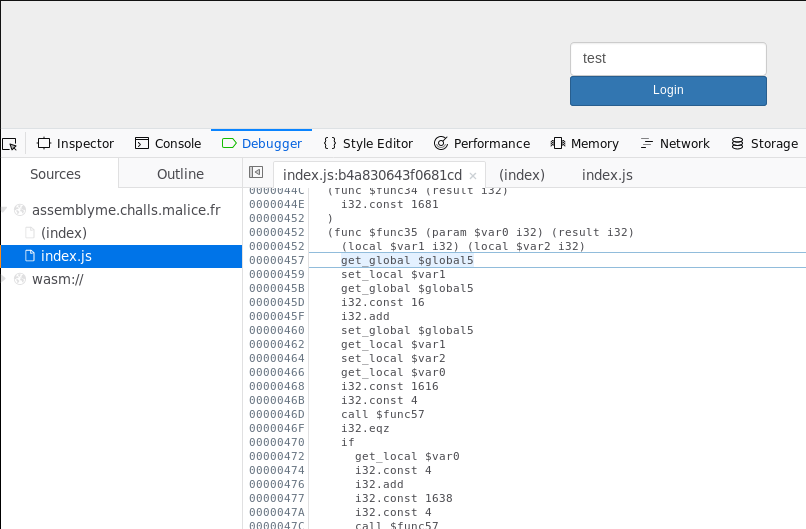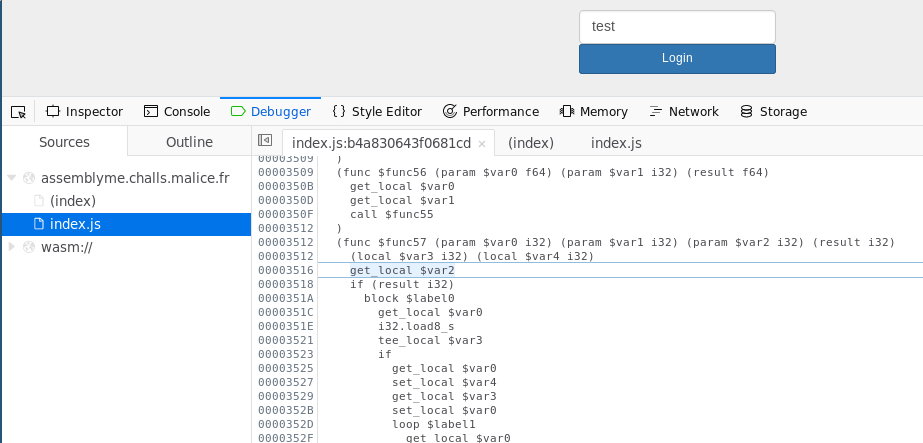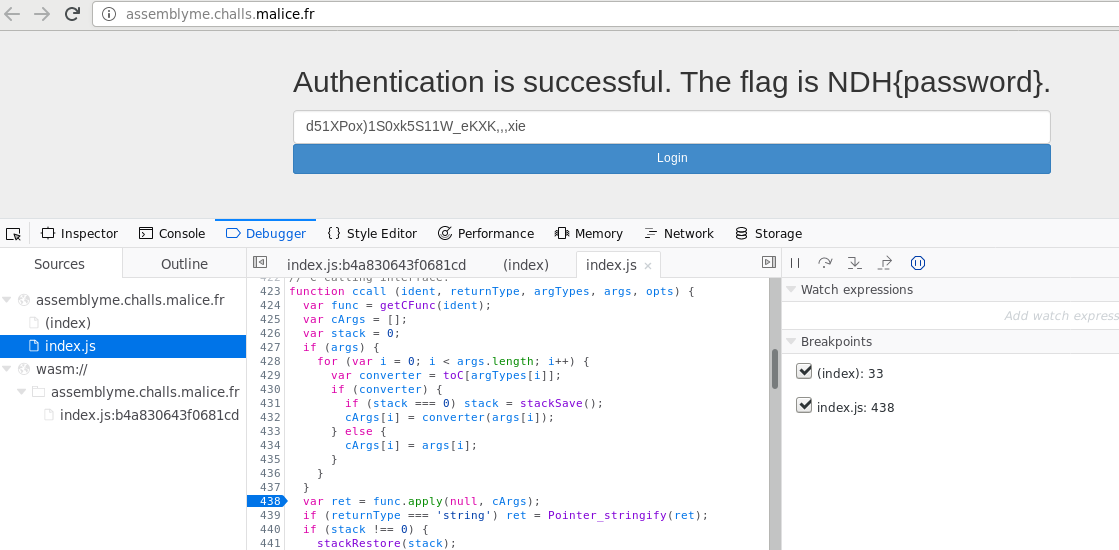Quals NDH 2018 - AssemblyMe
CTF URL: https://nuitduhack.com/Solves: 53 / Points: 300 / Category : Reverse
Challenge description
We updated our website with the latest technologies. In addition, this is secure ! You can try to log in if you want…
We start with a URL: http://assemblyme.challs.malice.fr
Challenge resolution
The webpage only contains a single user input password.
By submitting a random one, we can see that it is not forwarded to the server. The authentication is performed client-side.
Looking at the JavaScript code, we can see that checkAuth function is responsible for authentication:
u = document.getElementById("i").value; // user input
var a = Module.cwrap('checkAuth', 'string', ['string']); // authentication function
var b = a(u); // testing authentication
document.getElementById("x").innerHTML = b; // output answer
However, we cannot read this function because it has been compiled in Web Assembly (within index.wasm file).
At first, we tried to decompile the assembly with several tools, such as wasmdump (from wasm Pypi). We got the source code, however, we could not find out where the _checkAuth function was implemented (mostly because we didn’t know anything about Web Assembly). We realized that we could get the code and dynamically debug it from Firefox (which supports Web Assembly).
By setting a break point on the a(u) JavaScript call, we can dig into the web assembly source code.
We first stop the execution at the following point:

The apply function will execute the checkAuth function with the supplied user input as argument (the password). The output is given to the Pointer_stringify function which will be helpful later.
Stepping further, we get into the web assembly, within a function called func35:

At this point, we looked for the webassembly documentation to understand the assembly:
- http://webassembly.org/docs/text-format/
- http://webassembly.org/docs/semantics/
This was really useful.
The func35 is performing severals checks, calling func57 and comparing the return value with 0. If all the cascading conditions are met, the value 1690 is returned:
def func35(password): # this is python pseudo-code for func35
if func57(password, 1616, 4) == 0:
if func57(password+4, 1638, 4) == 0:
if func57(password+8, 1610, 5) == 0:
if func57(password+13, 1598, 4) == 0:
if func57(password+17, 1681, 3) == 0:
if func57(password+20, 1654, 9):
return 1690
We can see what value is pointed by 1690 by using the Pointer_stringify function:
> Pointer_stringify(1690)
"Authentication is successful. The flag is NDH{password}."
OK great! So now we have to find the right password to pass all these if conditions.
It means that we have to understand what the func57 function is actually doing.
The func57 has 3 parameters:
- a string pointer related to the user input (let’s call it “input”)
- a static string pointer which content can be retrieved via
Pointer_stringify(let’s call it “valid”) - an integer value (let’s call it “size”)
Digging further with the debugger, we enter the func57:

Looking at the code, we can see that the function is checking if the size first characters of the input string match the size first characters of the valid string (which is similar to the strncmp function).
We have the following pseudo-code:
def func57(input, valid, size):
for i in range(size):
if valid[i] != input[i]:
return something_different_from_0
return 0
Reusing the Pointer_stringify JS function, we can grab all the valid values:
> Pointer_stringify(1616)
"d51X1"
> Pointer_stringify(1638)
"Pox)sm"
> Pointer_stringify(1610)
"1S0xk"
> Pointer_stringify(1598)
"5S11x"
> Pointer_stringify(1681)
"W_enc_cb"
> Pointer_stringify(1654)
"KXK,,,xie"
We now have the following parameters given to func57:
| iteration | param0: input | param1: valid | param2: size |
|---|---|---|---|
| 0 | password | 1616 -> “d51X1” | 4 |
| 1 | password+4 | 1638 -> “Pox)sm” | 4 |
| 2 | password+8 | 1610 -> “1S0xk” | 5 |
| 3 | password+13 | 1598 -> “5S11x” | 4 |
| 4 | password+17 | 1681 -> “W_enc_cb” | 3 |
| 5 | password+20 | 1654 -> “KXK,,,xie” | 9 |
Hence, to pass the first condition, the 4 first characters (from 0 to 3) of our password need to be “d51x”. To pass the second condition, the characters from 4 to 7 need to be “Pox)”. To pass the third condition, the characters from 8 to 13 need to be “1S0xk”. And so on…
Putting everything together, the final password is “d51XPox)1S0xk5S11W_eKXK,,,xie”, which validates:

Special thanks to Sébastien Mériot for his help on the Web Assembly reversing. We could not make it without him!
Authors:
-
Marine Martin
-
Quentin Lemaire | @QuentynLemaire
Post date: 2018-04-01